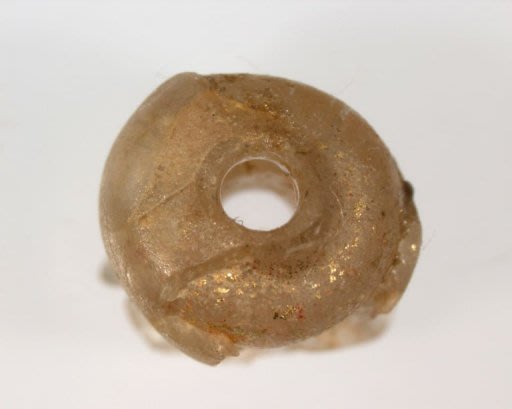Either way, glass jewelry of Roman design has been found in the Fifth Century "Utsukushi" burial mound in Nagaoka, near Kyoto, Japan, researchers said Friday.
Tests have revealed three glass beads were probably made some time between the first and the fourth century, the Nara National Research Institute for Cultural Properties said. The glass beads, light yellow in color, measure five millimeters (0.2 inches) in diametee, with tiny fragments of gilt attached. They were made with natron, a chemical used to melt glass by craftsmen in the Roman empire. They have a hole through the middle and were made with a multilayering technique -- a relatively sophisticated method in which craftsmen piled up layers of glass, often sandwiching gold leaf in between.

5mm diameter piece of glass jewellery believed to have been made by Roman craftsmen, was found in an ancient tomb at Nagaokakyo near Kyoto, in western Japan. The glass beads are one of the oldest multilayered glass products were believed to be made in the Roman Empire and sent to Japan, a researcher said. (AFP Photo/Nara National Research Institute)
Roman jewellery found in ancient Japan tomb - AFP




Comments